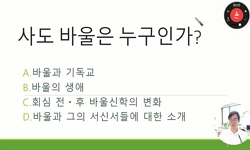본 연구는 데이트 폭력의 인식(심각성과 허용도)과 폭력 피해·가해경험과의 관련성을 분석하여 인식을 향상시키기 위한 실천적 대안을 제시하고자 수행되었다. 연구목적을 위해 20~30대 미...
http://chineseinput.net/에서 pinyin(병음)방식으로 중국어를 변환할 수 있습니다.
변환된 중국어를 복사하여 사용하시면 됩니다.
- 中文 을 입력하시려면 zhongwen을 입력하시고 space를누르시면됩니다.
- 北京 을 입력하시려면 beijing을 입력하시고 space를 누르시면 됩니다.
https://www.riss.kr/link?id=A101016342
- 저자
- 발행기관
- 학술지명
- 권호사항
-
발행연도
2014
-
작성언어
Korean
- 주제어
-
등재정보
KCI등재
-
자료형태
학술저널
-
수록면
79-103(25쪽)
-
KCI 피인용횟수
28
- 제공처
-
0
상세조회 -
0
다운로드
부가정보
국문 초록 (Abstract)
본 연구는 데이트 폭력의 인식(심각성과 허용도)과 폭력 피해·가해경험과의 관련성을 분석하여 인식을 향상시키기 위한 실천적 대안을 제시하고자 수행되었다. 연구목적을 위해 20~30대 미혼남녀 858명을 대상으로 유형별 폭력(신체적 폭력, 심리적 폭력, 성적 폭력)을 묘사한 비네트 상황에 대한 심각성을 어떻게 인식하는지, 그러한 폭력이 질투, 무시, 선제공격으로 인한 폭력이었다면 허용할 수 있는지 그리고 모든 대상자의 심리, 신체, 성적 폭력의 피해, 가해경험을 질문하였다. 조사 결과 대상자의 인식수준을 보면, 각 비네트 상황에 대한 심각성은 5점 척도에 4.21로 높게 인식하였으나, 허용도 역시 4점 척도에 2.24로 높아, 심각하다고 인식하면서도 특정 상황에서는 데이트 폭력을 쉽게 허용할 수 있음을 알 수 있다. 각 유형별 폭력의 가해, 피해경험을 보면, 심리적 폭력은 대상자의 88%이상이 피해, 가해경험을 가지고 있었으며, 신체적 폭력은 가해경험 53.6%, 피해경험 49.5%였다. 성적 폭력은 가해경험이 28.1%, 피해경험이 30.7%였다. 인구통계학적 변인을 통제한 상태에서 데이트 폭력의 피해·가해경험과 인식과의 관련성을 보면, 성적 폭력의 피해·가해경험이 있는 경우 없는 경우보다 심각성은 낮게 인식하였고 상황별 허용도는 높았다. 신체적 폭력의 피해경험에서 심각성은 의미 있는 차이가 없었지만 상황별 허용도는 피해경험이 있는 경우 없는 경우보다 더 높았다. 그러나 신체적 폭력의 가해경험과 심리적 폭력의 피해·가해경험 유무에 따른 인식(심각성과 허용도)은 통계적으로 의미 있는 차이를 보이지 않았다. 결국 신체적 피해경험과 성적 폭력의 피해·가해경험이 있는 경우 인식수준이 더 낮아 폭력이 재발되어도 이를 허용할 가능성이 높으므로 인식을 향상시키기 위한 노력이 필요함을 제안하였다.
다국어 초록 (Multilingual Abstract)
The purpose of this study is to analyze the relationship between perception of dating violence and the offense and victimization violence experience(severity and acceptability). The participants were 858 unmarried men and women of 20s ~30s. We divided...
The purpose of this study is to analyze the relationship between perception of dating violence and the offense and victimization violence experience(severity and acceptability). The participants were 858 unmarried men and women of 20s ~30s. We divided dating violence into psychological, physical, sexual of dating violence and has randomly presented one of the 3 types of vignettes to participants. The survey results on perception level of participants, severity of each vignette has been highly considered with 4.21 of 5 scale; however, in case of specific situation, it can be acceptability even though they"re perceive of seriousness likewise for acceptable with 2.24 of 4 scale. According to the offense and victimization experienced by each type of violence, In psychological violence, above 88% participants has offense and victimization. In physical violence, 53.6% participants has offense experience, 49.5% participants has victimization experience. In sexual violence, 28.1% participants has offense experience, 30.7% participants has victimization experience. According to the relation between offense, victimization experience and perception, When compared experienced group with no experienced group, the experienced group in physical and sexual violence is perceive of seriousness lowly but acceptability for each situation indicates high results. However, there is no significant difference in psychological violence. Finally, violence can be recurrent due to low perception level in case of having offense and victimization experience in physical, sexual violence. Accordingly, the endeavor is suggested to improve perception due to the fact that it has dangerousness into family violence.
목차 (Table of Contents)
- 국문초록
- Ⅰ. 서론
- Ⅱ. 이론적 논의
- Ⅲ. 연구방법
- Ⅳ. 분석결과
- 국문초록
- Ⅰ. 서론
- Ⅱ. 이론적 논의
- Ⅲ. 연구방법
- Ⅳ. 분석결과
- Ⅴ. 결론 및 제언
- 참고문헌
- Abstract
참고문헌 (Reference)
1 이정은, "폭력적 데이트관계 지속에 관한 투자모델의 수정 - 이타적 망상을 중심으로" 한국건강심리학회 12 (12): 983-995, 2007
2 김유정, "폭력적 데이트 관계에서의 충동성과 분노 및 분노조절" 한국건강심리학회 14 (14): 383-402, 2009
3 박근우, "정신장애인에 대한 대학생의 편견과 차별 - AIDS, 수형자 사례 유형과의 비교 -" 사회과학연구소 28 (28): 383-408, 2012
4 김재훈, "정신장애 유형에 따른 편견과 차별 - 사례를 활용한 대학생 조사 결과-" 한국정신보건사회복지학회 (37) : 35-64, 2011
5 박미은, "인간행동과 사회환경" 양서원 2007
6 이영숙, "이성교제 중 발생한 폭력" 36 (36): 49-61, 1998
7 유선영, "여대생의 가정폭력 피해와 데이트폭력 피해간의 매개 요인에 관한 연구 : 데이트폭력 허용도를 중심으로" 연세대학교 대학원 2000
8 김용미, "미혼 대학생의 혼전 단계에서의 신체적 폭력의 경험에 관한 실태 조사 연구" 14 (14): 187-197, 1996
9 김수희, "데이트하다 살인까지 폭력은 사랑이 아니야"
10 이지웅, "데이트폭력 해법은? 남녀사이 편견부터 없애야"
1 이정은, "폭력적 데이트관계 지속에 관한 투자모델의 수정 - 이타적 망상을 중심으로" 한국건강심리학회 12 (12): 983-995, 2007
2 김유정, "폭력적 데이트 관계에서의 충동성과 분노 및 분노조절" 한국건강심리학회 14 (14): 383-402, 2009
3 박근우, "정신장애인에 대한 대학생의 편견과 차별 - AIDS, 수형자 사례 유형과의 비교 -" 사회과학연구소 28 (28): 383-408, 2012
4 김재훈, "정신장애 유형에 따른 편견과 차별 - 사례를 활용한 대학생 조사 결과-" 한국정신보건사회복지학회 (37) : 35-64, 2011
5 박미은, "인간행동과 사회환경" 양서원 2007
6 이영숙, "이성교제 중 발생한 폭력" 36 (36): 49-61, 1998
7 유선영, "여대생의 가정폭력 피해와 데이트폭력 피해간의 매개 요인에 관한 연구 : 데이트폭력 허용도를 중심으로" 연세대학교 대학원 2000
8 김용미, "미혼 대학생의 혼전 단계에서의 신체적 폭력의 경험에 관한 실태 조사 연구" 14 (14): 187-197, 1996
9 김수희, "데이트하다 살인까지 폭력은 사랑이 아니야"
10 이지웅, "데이트폭력 해법은? 남녀사이 편견부터 없애야"
11 서경현, "데이트 폭력에 대한 가부장/비대칭 패러다임과 성-포괄적 모델의 타당성 제고" 한국건강심리학회 15 (15): 781-799, 2010
12 이은혜, "데이트 폭력 관계를 유지시키는 요인으로서 용서: 투자모델에 더하여" 한국심리학회 28 (28): 385-403, 2009
13 임채영, "대학생의 폭력인식이 데이트폭력행동에 미치는 영향 - 관계만족도의 조절효과를 중심으로 -" 한국지역사회복지학회 (35) : 147-179, 2010
14 이지연, "대학생의 데이트 성폭력 피해와 가해에 대한 설명모형" 한국상담심리학회 17 (17): 419-436, 2005
15 장희숙, "대학생 이성교제폭력의 실태와 위험요인들" 8 : 179-204, 2001
16 Stewart, C., "Who Gets Blamed for Intimate Partner Violence? The Relative Contributions of Perpetrator Sex Category, Victim Confrontation, and Observer Attitudes" 27 (27): 3739-3754, 2012
17 Lundberg-Love, P., "Violence in dating relationships: Emerging social issues" 169-184, 1989
18 Straus, M. A., "The revised Conflict Tactics Scales(CTS2): Development and preliminary psychometric data" 17 (17): 283-316, 1996
19 Gover, A. R., "The relationship between violence in the family of origin and dating violence among college students" 2008
20 DeKeseredy, W., "The incidence and prevalence of woman abuse in Canadian university and college dating relationships" 18 (18): 137-159, 1993
21 Witte, T. H., "Social Norms for Intimate Partner Violence in Situations Involving Victim Infidelity" 27 (27): 3389-3404, 2012
22 Cornelius, T. L., "Self-reported communication variables and dating violence: Using Gottman’s marital communication conceptualization" 25 (25): 439-448, 2010
23 Ronfeldt, H. M., "Satisfaction with relationship power and the perpetration of dating violence" 60 (60): 70-78, 1998
24 Witte, T. H., "Risk recognition and intimate partner violence" 25 (25): 2199-2216, 2010
25 Kuffel, S. W., "Preventing physical, psychological, and sexual aggression in college dating relationships" 22 (22): 361-374, 2002
26 Cate, R. M., "Premarital abuse: a social psychological perspective" 3 (3): 79-90, 1982
27 O'Leary, K. D., "Physical aggression in early marriage: prerelationship and relationship effects" 62 (62): 594-602, 1994
28 Basow, S. A., "Perceptions of relational and physical aggression among college students: Effects of gender of perpetrator, target, and perceiver" 31 (31): 85-95, 2007
29 Xenos, S., "Perceptions of rape and sexual assault among Australian adolescents and young adults" 16 (16): 1103-1119, 2001
30 Riggs, D. S., "Multiple correlates of physical aggression in dating couples" 5 (5): 61-73, 1990
31 Stets, J. E., "Interactive processes in dating aggression: A national study" 54 (54): 165-177, 1992
32 Hoyt, T., "Individual and situational influences on men’s responses to dating and social situations" 26 (26): 1723-1740, 2011
33 Sears, H. A., "If it hurts you, then it is not a joke: Adolescents' ideas about girls' and boys' use and experience of abusive behavior in dating relationships" 21 : 1191-1207, 2006
34 Próspero, M., "Gender differences in the relationship between intimate partner violence victimization and the perception of dating situations among college students" 22 (22): 489-502, 2007
35 Beyers, J. M., "Gender differences in the perception of courtship abuse" 15 (15): 451-466, 2000
36 Sorenson, S. B., "Female aggression toward male intimate partners: An examination of social norms in a community‐based sample" 29 (29): 78-96, 2005
37 Capezza, N. M., "Factors associated with acceptance of psychological aggression against women" 14 (14): 612-633, 2008
38 Rutter, L. A., "Examining gender differences in the relationship between dating violence victimization and anger in college students" 27 (27): 70-77, 2012
39 Straus, M. A., "Discipline and deviance: Physical punishment of children and violence and other crime in adulthood" 38 (38): 133-154, 1991
40 White, J. W., "Courtship violence: incidence in a national sample of higher education students" 6 (6): 247-256, 1991
41 Makepeace, J. M., "Courtship violence among college students" 30 (30): 97-102, 1981
42 Jackson, H., "Clinician responses to sexual abuse allegations" 17 (17): 127-143, 1993
43 Foshee, V. A., "Assessing the long-term effects of the Safe Dates program and a booster in preventing and reducing adolescent dating violence victimization and perpetration" 94 (94): 619-624, 2004
44 Foo, L., "A multivariate investigation of dating aggression" 10 (10): 351-377, 1995
동일학술지(권/호) 다른 논문
-
결혼이주여성의 문화적응스트레스가 결혼만족도에 미치는 영향
- 경성대학교 사회과학연구소
- 이순자(Lee, Soon Ja)
- 2014
- KCI등재
-
- 경성대학교 사회과학연구소
- 염동문(Yeum, Dong Moon)
- 2014
- KCI등재
-
노인들의 성장기 애착분리경험과 성인애착유형이 배우자 관련 애착관계형성에 미치는 영향
- 경성대학교 사회과학연구소
- 김수환(Kim, Soo Whan)
- 2014
- KCI등재
-
- 경성대학교 사회과학연구소
- 나중식(Nah, Joong Shik)
- 2014
- KCI등재
분석정보
인용정보 인용지수 설명보기
학술지 이력
| 연월일 | 이력구분 | 이력상세 | 등재구분 |
|---|---|---|---|
| 2026 | 평가예정 | 재인증평가 신청대상 (재인증) | |
| 2020-01-01 | 평가 | 등재학술지 유지 (재인증) |  |
| 2017-01-01 | 평가 | 등재학술지 선정 (계속평가) |  |
| 2016-12-01 | 평가 | 등재후보로 하락 (계속평가) |  |
| 2012-01-01 | 평가 | 등재학술지 유지 (등재유지) |  |
| 2009-01-01 | 평가 | 등재학술지 선정 (등재후보2차) |  |
| 2008-01-01 | 평가 | 등재후보 1차 PASS (등재후보1차) |  |
| 2007-01-01 | 평가 | 등재후보학술지 유지 (등재후보1차) |  |
| 2005-01-01 | 평가 | 등재후보학술지 선정 (신규평가) |  |
학술지 인용정보
| 기준연도 | WOS-KCI 통합IF(2년) | KCIF(2년) | KCIF(3년) |
|---|---|---|---|
| 2016 | 1.32 | 1.32 | 1.56 |
| KCIF(4년) | KCIF(5년) | 중심성지수(3년) | 즉시성지수 |
| 1.52 | 1.52 | 2.001 | 0.29 |




 DBpia
DBpia






